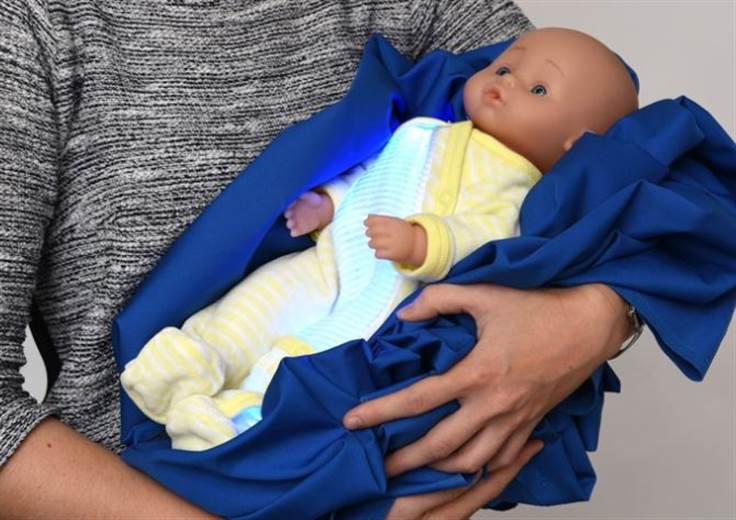Empa creates illuminated pyjamas to treat newborns with jaundice
31/10/2017

Empa's pyjamas emit light directly onto the baby's skin which means the “baby can get healthy while snug in its mother's arms”.
Infant metabolisms are not resilient within the first few days after birth. Normally, the liver disposes of toxins in the body. With hemoglobin degradation, however, the child's liver may still be overwhelmed. If the toxic degradation product bilirubin accumulates in large amounts, visible yellow deposits occur in the skin. Light therapy in incubators prevents this. Light intensities of 30 microwatts per square cm in the blue spectrum transform the toxic bilirubin into a soluble form that can easily be removed by the infant's immature organs.
The material researchers, led by Luciano Boesel, created textiles with optically conductive fibres woven into them. Battery-operated LEDs serve as a light source for the light-conducting threads. The optical fibres are woven into a satin material that distributes the light supply evenly throughout the fabric.
Boesel's team determined the appropriate angle at which the threads must be bent during weaving so that the blue light stays in the therapeutic wavelength range of around 470 nanometers but is emitted onto the baby's skin, rather than staying in the fabric. The best result was achieved in a weaving process with a so-called 6/6 bond, which produces a satin cloth. Here, the optical threads have particularly few cross points with the traditional thread and are bent in an ideal way so the light is emitted uniformly over the skin.
Maike Quandt, lead author of the publication, said: "The photonic textiles are washable and tolerated well by the skin. The satin fabric is smooth and matches the wearing comfort of a typical baby onesie.”








